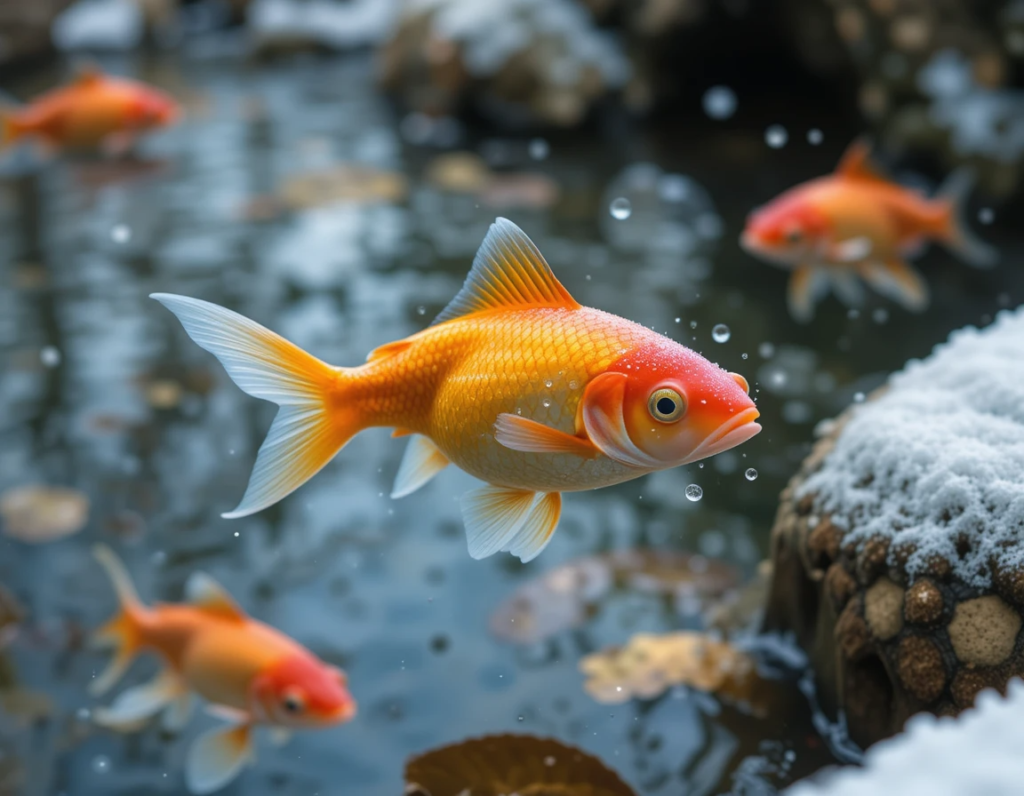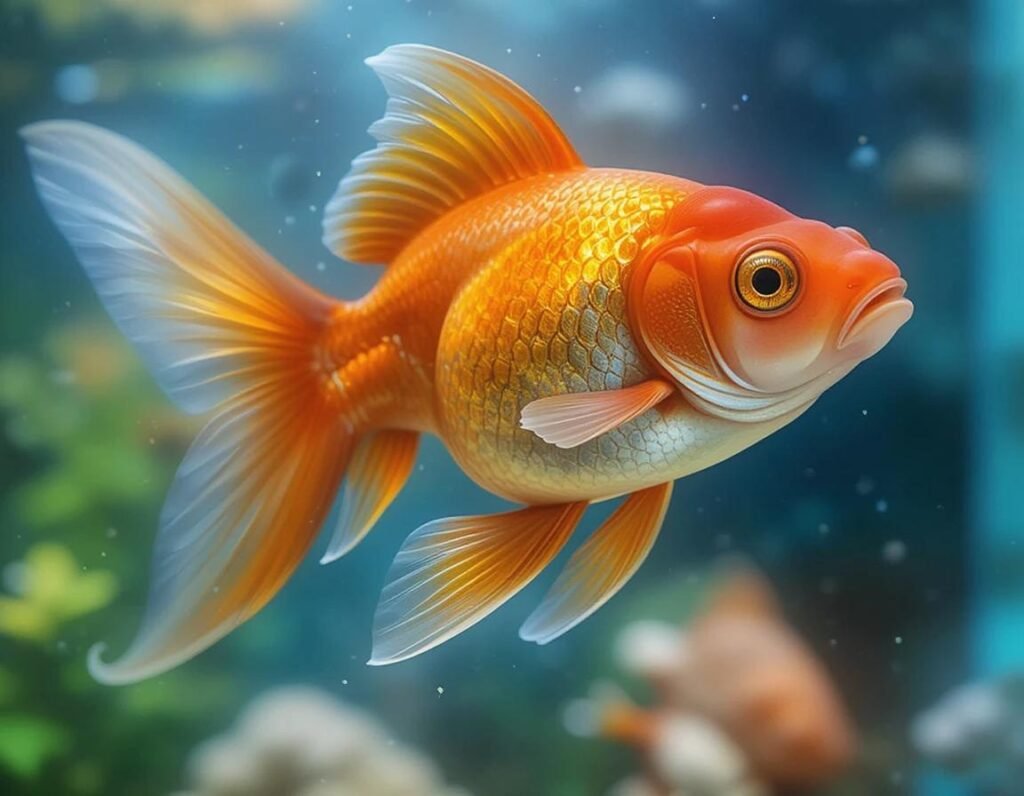
Goldfish Pond Winter Care: How to Keep Your Fishy Friends Cozy in the Cold
Winter is coming, and while your goldfish might not be stressing about the impending chill (they’re not exactly tuning into the weather forecast), it’s your job to make sure they stay safe and comfy in their pond during the colder months. Let’s face it: no one wants to be the goldfish that freezes its fins off! So, let’s dive into some simple, fish-approved tips for winterizing your goldfish pond.
1. Keep the Pond Clean Before It Freezes
First things first—cleaning your pond is crucial before the temperatures dip. You wouldn’t leave dirty dishes out all winter, right? Well, your pond’s pretty much the same. Remove any leaves, debris, or leftover food that’s settled at the bottom. Decaying matter can create harmful gases that will only worsen as the cold sets in.
It’s also a good time to clean the pond filter (yes, it’s like a spring cleaning but in winter). Don’t want that filter clogging up and giving up halfway through winter, do you?
2. Install a Pond Heater or Deicer
Goldfish are pretty tough, but that doesn’t mean they enjoy ice baths. Pond heaters (or deicers) are the winter MVPs. These handy little devices keep a portion of the pond’s surface from freezing over completely, allowing oxygen to enter the water and preventing toxic gases from building up underneath the ice. Imagine trying to breathe in a sealed-up, stinky room—yeah, your fish don’t like that either.
Don’t worry, it’s not like installing a heater in your house. Pond heaters are designed to be energy efficient and work even in freezing temperatures.
3. Reduce Feeding
As the water temperature drops, your goldfish’s metabolism slows down. They become less active, and guess what? They don’t need as much food. Overfeeding in winter is like giving your goldfish an all-you-can-eat buffet when they’re too full to care. It can lead to uneaten food that pollutes the water, and that’s definitely something you want to avoid.
You can feed them once every couple of days with small amounts of food. Your goldfish will still appreciate the occasional snack—just be sure to keep it light.
4. Maintain Pond Depth
Goldfish are coldwater fish, but they need some depth to stay warm when the temperatures plummet. Make sure your pond is deep enough (at least 18-24 inches deep) so your goldfish can escape the freezing surface and find warmer water at the bottom. Think of it as your fish’s version of snuggling under a warm blanket in the winter.
If you live in an area where the water freezes solid, consider moving your goldfish to an indoor tank for the winter months. They’ll be more comfortable and safer until the pond thaws.
5. Use a Pond Cover or Net
Falling leaves and debris are not just a nuisance—they can block oxygen from entering the water and cause a buildup of toxic gases. So, keep your pond covered with a net or cover to prevent leaves from dropping in and causing chaos. Not only will this keep things cleaner, but it’ll also save you from having to fish out those pesky leaves later on.
6. Monitor Water Quality
Even in winter, water quality matters. Regularly check the water’s pH, ammonia, nitrite, and nitrate levels. While your pond won’t be seeing a lot of action during winter, it’s still important to make sure your goldfish are swimming in healthy water. Make adjustments as needed and don’t let things get out of hand.
7. Keep Your Fish Calm and Stress-Free
Stress isn’t good for goldfish, especially in the winter when they’re already dealing with colder temperatures and a change in routine. Try to keep the pond quiet and calm. Avoid adding any new fish or making drastic changes to the environment. And, while it might seem fun to decorate with floating toys or ornaments, remember: your goldfish is more about swimming than posing for Instagram pics.
8. Be Prepared for Spring
Winter’s harsh, but it’s not forever! As temperatures warm up and your pond starts thawing, be ready for spring maintenance. You’ll need to clear out the remaining ice, replace any damaged equipment, and make sure your filter is running smoothly again.
Your goldfish will be eager to stretch their fins and explore their fresh, post-winter world.
9. Consider a Pond Aerator
While you’re thinking about oxygen, a pond aerator can also be a great addition to your winter setup. These devices help circulate the water and keep oxygen levels up, especially if you’re worried about your fish getting enough air during the colder months. It also helps prevent the water from becoming too stagnant, which can lead to unpleasant conditions. Plus, it gives your fish the fresh, bubbly atmosphere they deserve—like a mini spa treatment!
10. Winter Pond Lights – Optional but Fun!
Okay, so this one’s not exactly a necessity, but hear me out. Adding a few waterproof LED lights around your pond can create a beautiful winter ambiance. It’s like giving your pond a warm holiday glow without the snowman. Just make sure the lights are safe for outdoor use and won’t harm your fish or your equipment. Nothing says “winter wonderland” like a pond that’s softly lit under a frosty sky!
11. Handle Your Pond’s Filter Carefully
Your pond filter works hard year-round, but during the winter, it’s crucial to keep it in tip-top shape. If you’re using a pump, make sure it’s rated for winter use (some pumps aren’t built to handle sub-zero temperatures). If you need to, disconnect and clean your filter thoroughly to prevent ice from causing any damage. A clogged or frozen filter is like your coffee machine on a Monday morning—it’s just not going to work.
12. Stay Calm and Avoid Panic!
We get it. Winterizing your pond can feel a little overwhelming. But don’t panic! Fish are resilient, and with just a bit of effort, they’ll thrive through the cold months. Your goldfish will be just fine—after all, they’ve survived since the days of ancient China. They’re not picky about winter, as long as you keep them safe, fed, and free from freezing.

Final Thoughts: Winter Doesn’t Have to be Frosty for Your Goldfish!
Goldfish ponds can be a bit of work in the winter, but it’s nothing you can’t handle. By following these simple steps—keeping things clean, monitoring the water, and ensuring your goldfish have the warmth and oxygen they need—you’ll help your fish cruise through the cold months without a hitch. And when spring rolls around, you’ll be able to enjoy the fruits of your labor with healthy, happy goldfish swimming around.
So, grab that net, plug in your heater, and make sure your pond is ready for the chill. Your goldfish will thank you with plenty of fin wags and underwater wiggles as they glide through the season like the true aquatic champions they are!
FAQs about Goldfish Pond Winter Care
1. Do I need to bring my goldfish inside for the winter?
Answer: No, not necessarily. Goldfish are cold-water fish and can handle chilly temperatures. However, if you live in an area where the pond may freeze solid, it’s a good idea to move them to an indoor tank. If the pond just gets cold but doesn’t freeze, your fish should be fine, as long as you provide adequate oxygen and keep the surface from completely freezing.
2. How deep should my pond be for winter?
Answer: To ensure your goldfish are comfortable in the winter, your pond should be at least 18-24 inches deep. This gives your fish a place to retreat to where the water stays warmer and provides enough space to avoid freezing. The deeper the pond, the better for your fish during the colder months!
3. Do I need a heater for my goldfish pond in winter?
Answer: It’s not mandatory, but a pond heater (or deicer) is highly recommended if you live in an area where the pond can freeze over. A heater will keep a portion of the surface from freezing, allowing gas exchange and maintaining oxygen levels in the water. Plus, it helps your fish avoid becoming stressed due to lack of oxygen.
4. Should I stop feeding my goldfish in winter?
Answer: Not entirely, but goldfish’s appetites decrease in colder temperatures because their metabolism slows down. You can reduce feeding to once every few days, offering smaller portions of food. Any leftover food can pollute the water, so it’s important not to overfeed during the winter months.
5. Can I leave my pond filter running all winter?
Answer: Yes, but make sure your filter is rated for cold temperatures. You’ll want to keep the filter running to help circulate the water and maintain water quality. Just make sure the filter doesn’t freeze or become clogged with debris. If necessary, clean it out thoroughly before the winter sets in.
6. How do I prevent ice from forming on my pond in winter?
Answer: You can use a pond heater or deicer to prevent the surface from freezing completely. Additionally, consider using a floating pond cover or net to keep leaves and debris out of the water. Keeping the water moving, even a little, will also reduce the chances of ice formation.
7. Will my goldfish be okay if the pond freezes over?
Answer: If the entire pond freezes solid, it can be dangerous for your goldfish because it can block oxygen exchange and trap harmful gases under the ice. To avoid this, use a pond heater or deicer to keep a hole in the ice. If you can’t prevent the pond from freezing, moving your goldfish indoors is a safer option.
8. How do I handle my goldfish pond filter during the winter?
Answer: You should clean your pond filter before the winter starts to remove any debris. Make sure the filter is functioning well, and if necessary, remove the filter or pump if it isn’t rated for winter use. Some pumps may need to be stored inside to prevent freezing or damage.
9. Is it okay to add new plants to my pond during winter?
Answer: Adding new plants during the winter isn’t usually the best idea, as it can disturb your pond’s balance and make it harder to care for. It’s best to add new plants in the spring, when the weather warms up, and the pond is ready for new growth.
10. How often should I check my pond during the winter?
Answer: At least once a week, check the pond for signs of ice buildup, debris, and general pond health. You’ll also want to monitor the water quality and temperature. If you have a heater, make sure it’s still functioning properly. A quick check can prevent potential problems from escalating.


